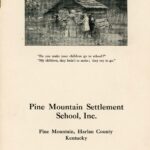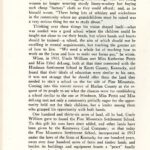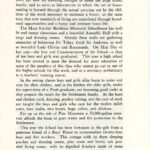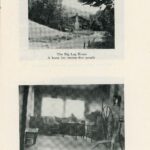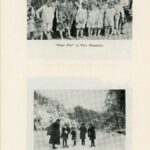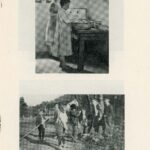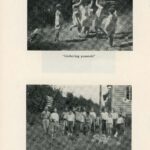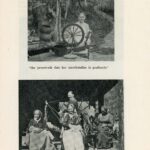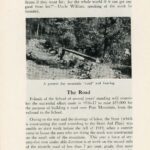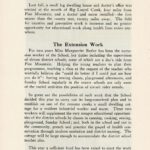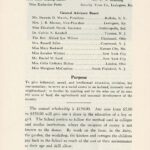Pine Mountain Settlement School
Series 24: PUBLICATIONS PMSS
The History of the Pine Mountain Settlement School
1920
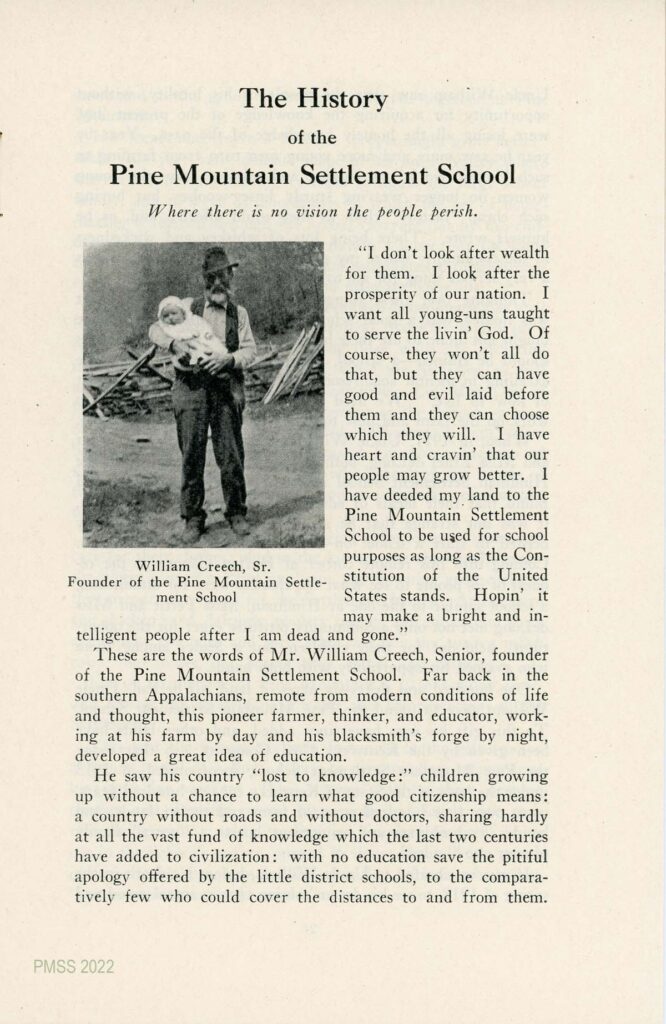
01 hist_booklet_pmss_inc_1920_001. “The History of the Pine Mountain Settlement School.”
TAGS: History Pine Mountain Settlement School, William Creech, Sr., Do you make your children go to school?, compulsory education, Appalachian schools, Katherine Pettit, one-room schools, Harlan County, KY, educational planning, children, photography, Katherine Pettit, Ethel de Long Zande, Uncle William’s Reasons, heart and cravin’,
PINE MOUNTAIN SETTLEMENT SCHOOL, INC.
PINE MOUNTAIN, HARLAN COUNTY, KENTUCKY
Do you make your children go to school?
September 1920
Reportedly the woman standing with the family at their cabin and with her back to the camera in this small pamphlet, is Katherine Pettit, Co-Director of PMSS. She was known for avoiding any photographer. One copy of this image found within her photograph album shows the woman with her back to the camera, fiercely scratched out. While Katherine Pettit was a force in the creation of Pine Mountain Settlement School, who did not want to be seen, she was a woman of vision.
Where there is no vision the people perish.
William Creech, Sr. did want to be seen and to be remembered. His image, his thoughts, and his hopes are at the center of the history of Pine Mountain Settlement. This small publication captures his hopes and the dreams of those he inspired. For all those dreamers, education has always been at the forefront of the Pine Mountain Settlement School mission. Katherine Pettit began her campaign for the education of eastern Kentucky mountain children at Hindman with her co-director, May Stone. At Pine Mountain Pettit and her co-director, Ethel de Long Zande took the lessons learned at Hindman and added dreams and their knowledge to the venture. It was an adventure that continues today.
In 1913 the new school in the Pine Mountain Valley and its ambitious directors, community, and staff charged ahead with ideas tested by many of the most progressive educators and educational ideas in the country. One of the most unique aspects of the new educational programs that Pettit and de Long envisioned was to educate not just children but to bring into the learning sphere the entire community surrounding the school.
Uncle William Creech, the Metcalf family, and other donors held fast to the dreams, as well, and gave the land and helped to shape the moral and non-sectarian religious foundations. The early years relied heavily on the vision of these land donors, particularly Uncle William Creech and his wife Aunt Sal. Experts at the nearby universities and Washington governmental offices, engineers, and educational experts were invited to critique and supplement the new school’s instructional plans. They helped and encouraged the new school to combine traditional education with industrial training and farming. The collective energy of the early years was sustained. Growth was rapid but expensive for the time, and promotional literature such as this small booklet was vital to the reach of the remote institution. Well-structured brochures, pamphlets, and letters helped to maintain a revenue stream and an ongoing dialog with donors and friends of the School throughout the early years. Today’s digital reach is broad, but not nearly so deep and tangible as these early publications.
GALLERY – Promotional Booklet 1920, “Do you make your children go to school?…”
- cover hist_booklet_pmss_inc_1920_cover
- 01 hist_booklet_pmss_inc_1920_001
- 02 hist_booklet_pmss_inc_1920_002
- 03 hist_booklet_pmss_inc_1920_003
- 04 hist_booklet_pmss_inc_1920_004
- 05 hist_booklet_pmss_inc_1920_005
- 06 hist_booklet_pmss_inc_1920_006
- 07 hist_booklet_pmss_inc_1920_007
- 08 hist_booklet_pmss_inc_1920_008
- 09 hist_booklet_pmss_inc_1920_009
- 10 hist_booklet_pmss_inc_1920_010
- 11 hist_booklet_pmss_inc_1920_011
- 12 hist_booklet_pmss_inc_1920_012
- 13 hist_booklet_pmss_inc_1920_013
- 14 hist_booklet_pmss_inc_1920_014
- 15 hist_booklet_pmss_inc_1920_015
- 16 hist_booklet_pmss_inc_1920_016
- 17 hist_booklet_pmss_inc_1920_017
TRANSCRIPTION [PENDING]
SEE
PUBLICATIONS PMSS EPHEMERA GUIDE

